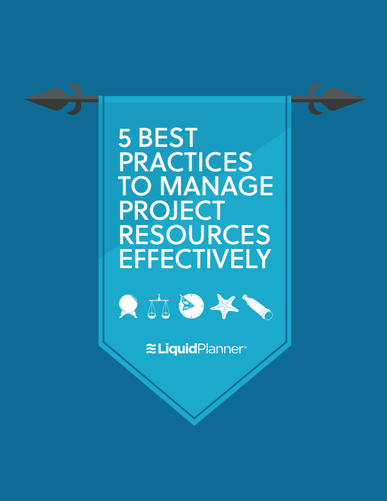The purpose of project management is to bring together people, processes and tools to accomplish a common objective. It follows, then, that one of the most important elements of project management is managing the resources that actually do the work. In practice, however, many PMs focus on measuring resources rather than acting as a force multiplier that understands and motivates their team. To help you avoid this mistake, here are five key points to effectively managing resources:
1. Resources are people, too.
Resource management is typically discussed with charts and graphs, using terms like Resource Assignment Matrices (RAMs) and optimal utilization. While this mechanical methodology creates an important analytical framework for Portfolio Project Management (PPM), the most important nuance is almost always overlooked: Resources are usually people. In the end, all the histograms in the world won’t actually increase your team’s productivity.
The fact that people are ultimately responsible for project success is the most important thing to remember about resource management. Soft skills like communication, leadership and emotional intelligence are necessary to effectively communicate with team members in order to inspire and motivate. Great PMs understand how to combine PPM tools and the people doing the work to create a transparent, collaborative, and productive project environment.
2. Visibility is key.
The ability to strike a balance between knowing what motivates your team and what they are working on is vital. Make sure that you have a global view of all your projects and resources. The ability to use a PPM tool that enables enterprise resource planning and scheduling can be very powerful in the diagnosis of potential pitfalls and enable careful introduction of certain productivity measures necessary to run your business.
Just remember that the numbers don’t actually speak for themselves: people do. Use metrics wisely to help identify project areas that might need attention, then seek to understand how you can help by talking to the person or the team responsible for completing the work.
3. Collaboration increases productivity.
It’s commonly regarded these days that collaboration among team members increases productivity and decreases errors. Using a tool that enables your team to collaborate and foster both productivity and creativity is critical to successful resource management (and the success of your project).
Nobody wants to be left alone to wither away in a desert, so make sure your team is free to quench their thirst for real-time feedback and ideas through collaboration tools.
4. Transparency fosters trust.
Make sure your resources are aligned and everyone’s working toward a common objective. Transparency in resource management requires:
- Clear prioritization of tasks. Make sure people know what’s important.
- Solid estimates. Give people the freedom to estimate in ranges and you’ll not only create more accurate schedules, but you’ll also highlight the uncertainty in your project plan.
- Risk awareness. Involve resources in the project planning and delivery processes and encourage open discussions about the biggest risks to your project
When everyone is open, honest and transparently working together, your resources become an unstoppable force of nature.
5. Don’t forget to show the love.
People perform at their best when they’re passionate about their work. Not surprisingly, when you have resources working on tasks that are outside of their skill-set or their field of interest, the end result will be uninspired at best (and counterproductive at worst).
Get to know your teammates to find out what type of work they really love to do or what type of work motivates them most. This will help you match a resource to a task rather than assign a resource. Conversely, you’ll know which tasks they should steer clear of, resulting in the optimal resource allocation.
Lastly, never let a job well done go unrewarded. Let people know how important their efforts are to the project. Your team is capable of amazing things – don’t ever let them forget it.
Now that you have some key principles down, you’re ready to learn how to do the work of managing resources–which can determine the success of a project. To learn how, download our eBook, 5 Best Practices to Manage Resources Effectively.
Samantha Sauer is a Seattle-based writer, editor, and content marketing strategist who thrives in roles that require the left and right brains to work together. She specializes in helping companies tell their stories, build their brands, and achieve bottom-line results
 Schedule a demo of LiquidPlanner with a product expert today
Schedule a demo of LiquidPlanner with a product expert today







